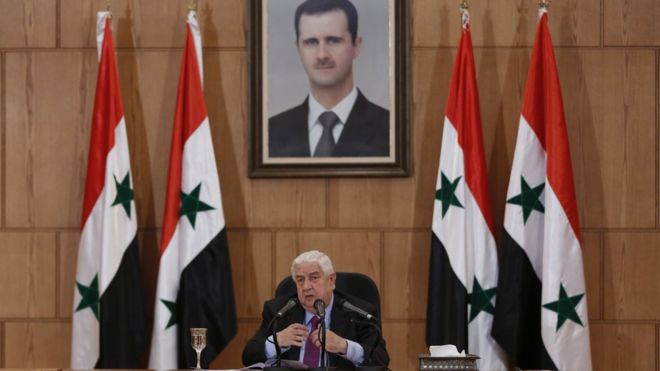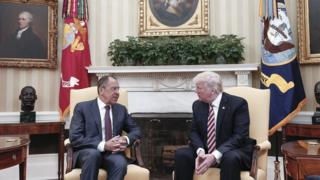Trumplomacy: How will Syrian 'safe zones' work?
By Barbara Plett Usher BBC News
 EPA
EPA
A few months ago I wrote about the state department's take on stabilisation zones in Syria.
To recap: these would be areas where security and local governance could be restored, thus allowing the return of refugees.
And this would be about reducing the violence and setting the stage for a political settlement, not bolstering the opposition in the civil war.
So a bit of an update: Russia has fleshed out these ideas with Iran and Turkey and all three have signed on to them in the Astana Agreement. It aims to set up four safe zones across the country prohibiting both Syrian government air strikes and rebel attacks.
But crucial details are still being finalised, such as who exactly would enforce the ceasefire and how.
Russian Foreign Minister Sergei Lavrov was in Washington this week seeking approval and input from the secretary of state and the US president.
He told journalists they discussed specific ways to jointly implement the zones, adding that he expected US input particularly in the one along Syria's border with Israel and Jordan.
That makes sense because that's the zone where the Americans have a troop presence. They work with local fighters there to combat the Islamic State group. If the Astana Agreement takes hold they'd be in a position to press the armed opposition to keep the terms of the ceasefire with the Syrian regime.
Mr Lavrov said Russia also hoped the US would contribute to "ensuring security" and "monitoring compliance" with the cessation of hostilities in other territories.
 EPA
EPA
What this might look like is less clear, but it wouldn't mean US soldiers manning checkpoints.
"The agreement calls for troops from the guarantors, and the US isn't a guarantor, so I don't see that happening," said an administration official. "Even on the ISIS stuff we are at a level where I don't anticipate a major troop increase."
US involvement could change, he added, if the regime and its backers show they are really serious about de-escalating the violence, "but to date we've seen violations already".
More Trumplomacy:
There is scepticism here, given that all past attempts at a ceasefire have failed.
"We expect the regime to stop all attacks on civilians and opposition forces, something they have never done," the state department said pointedly when the Astana Agreement was announced.
It also said the opposition must separate from designated terrorists such as the Islamist group Hay'at Tahrir Al Sham, something past American pressure failed to achieve.
HTS is a dominant force in Idlib in the north of the country, site of one of the proposed de-escalation zones. In a recent statement posted on the messaging APP Telegram, the group urged "Muslims" to reject the Astana Agreement and called for jihad against "corrupt" rebel factions prepared to accept it, labeling them "traitors".
Finally, the State Department expressed concern about the involvement of Iran as a "so-called" guarantor, because "Iran's activities in Syria have only contributed to the violence, not stopped it".
That's one of the issues President Trump raised with Mr Lavrov.
Source: http://www.bbc.com/news/world-us-canada-39888644
Comments